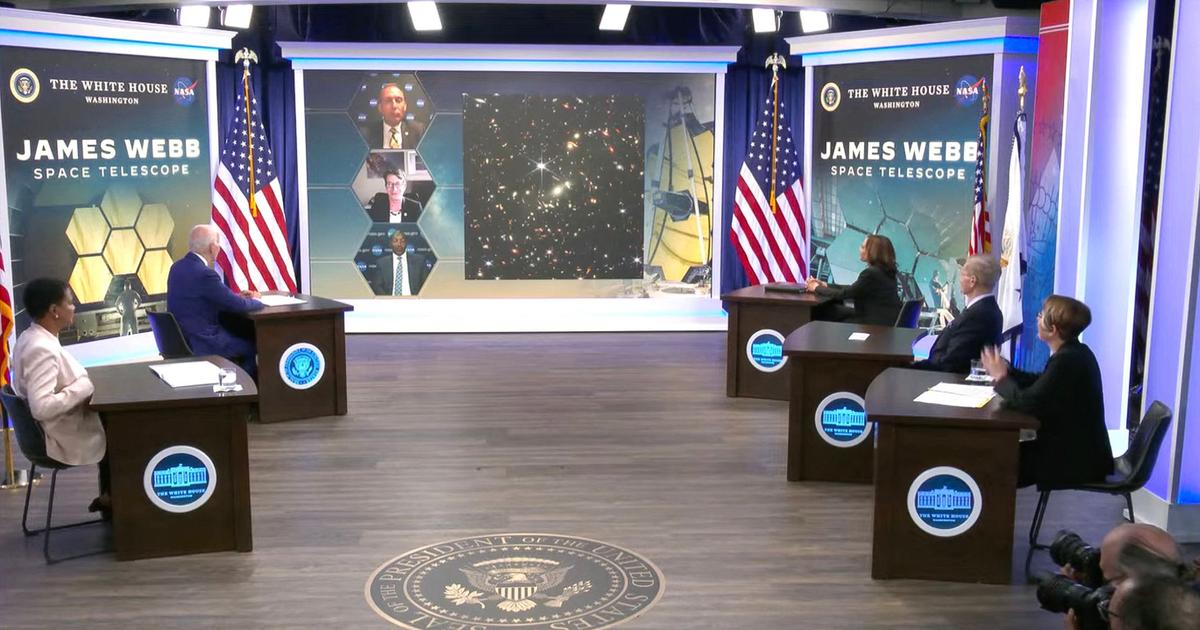At the request of the White House, the first image of the James Webb space telescope was presented to US President Joe Biden on Monday, almost 24 hours ahead of the program planned for several weeks by NASA.
It may not be the most artistic shot that the most powerful astronomical observatory ever launched into space will be able to achieve, but it is
"the deepest image ever taken of our Universe"
to use the words of Bill Nelson, head of the American space agency.
The Webb telescope is by far the largest instrument ever sent into space and it is partly thanks to its main mirror of 6m50 that it can flush out these very distant objects, formed only a few hundred million years later. the Big Bang.
But that's not all: astronomers also take advantage of a “cosmic magnifying glass” phenomenon which makes it possible to “close” the most distant galaxies.
This is the first image of the James Webb Telescope, the deepest of the Universe ever taken.
NASA/ESA/CSA, and STSCI
Read alsoThe Webb telescope has perfect vision
In this case, this magnification effect is caused by the presence on the line of sight of a cluster of galaxies, with the somewhat poetic name of SMACS 0723. Its immense mass bends the light rays that approach it, and forms a gravitational lensing effect, predicted by Einstein's theory of relativity.
The cluster that serves as a magnifying glass is located 4 billion light-years away, while the most distant galaxies are three times further away, more than 13 billion light-years away.
This means that we see them as they were shortly after the birth of the Universe, whose age is estimated at 13.6 billion years.
On the picture taken by the telescope, the most distant galaxies appear in the form of fine luminous arcs, the result of the deformation of their light by the gravitational distortion of the cluster SMACS 0723. With the Hubble telescope, the image of the same region of the sky allowed to see less than a dozen of these distant galaxies, a number which is multiplied thanks to the immense capacities of observation of the Webb telescope.
In the best image of the SMACS 0723 cluster taken by the old Hubble Space Telescope, only a few dozen small luminous arcs (betraying the presence of very distant galaxies) were visible.
NASA/ESA/Hubble







/cloudfront-eu-central-1.images.arcpublishing.com/prisa/TQ73US57UFGWTIXR7C3BS2OTIA.jpg)

